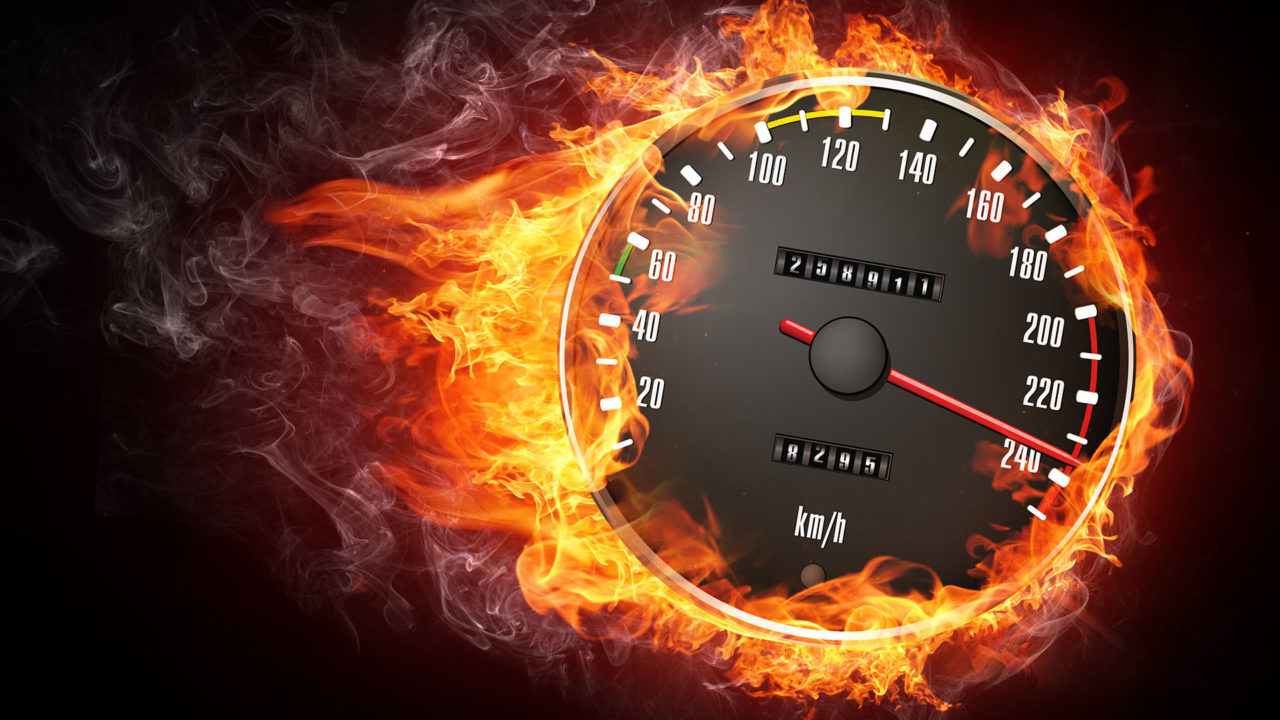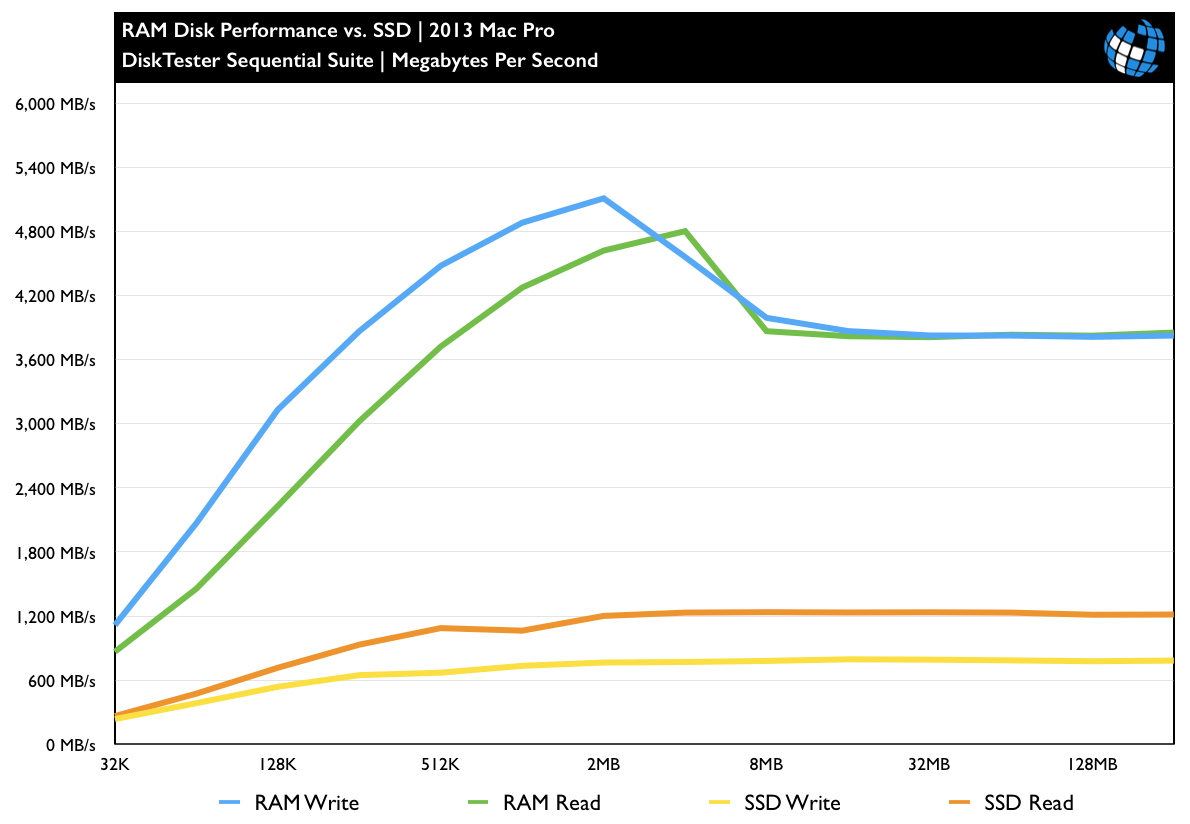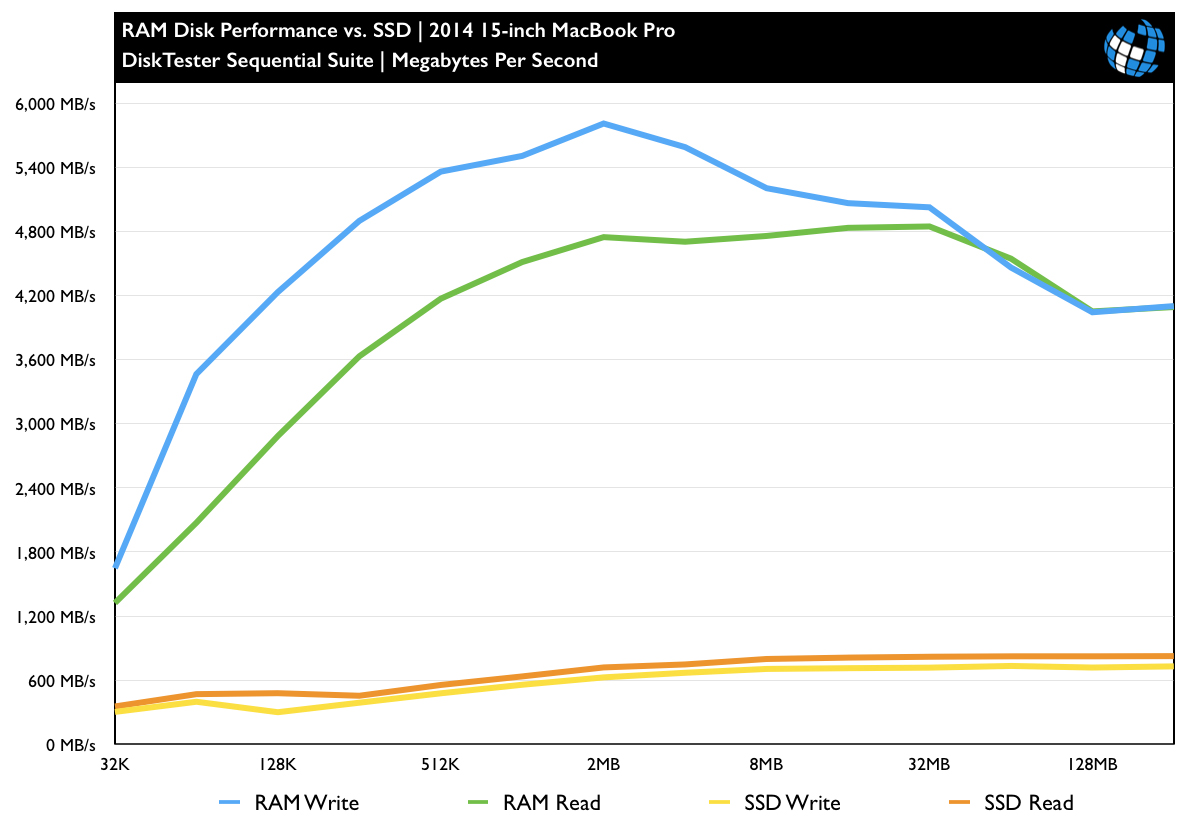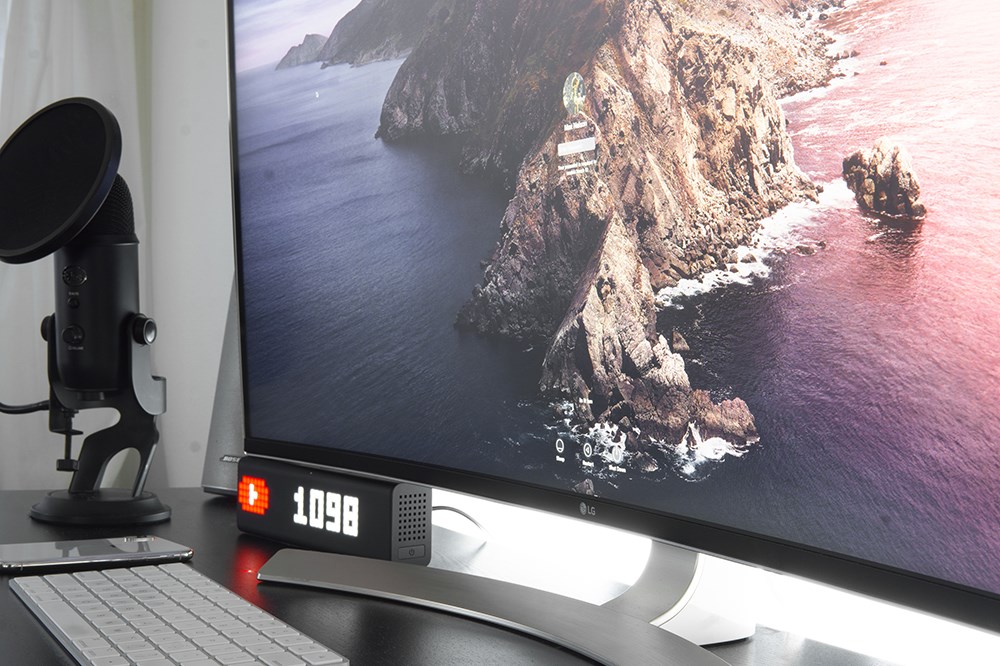Revisiting RAM Disks with the 2013 Mac Pro and 2014 MacBook Pro

Back in 2013, we looked at how to create a RAM Disk in OS X, and ran some benchmarks that revealed incredible performance (we also created and benchmarked a RAM Disk in Windows). RAM Disks certainly have their limitations — they are relatively small so as to not interfere with normal system operation, they are volatile and all data stored on them will be deleted when the Mac reboots or loses power, and they appear in OS X as disk images and not physical drives, which may limit compatibility with some applications — but the performance is simply breathtaking.
Our last RAM Disk trial is a few years old now, having been performed on a 2011 27-inch iMac with PC3-10600 DDR3 (1333Hz) memory. We were curious about how things have changed since then, and so we set out to experiment with RAM Disks once again, this time using Apple’s latest Macs: the 2013 Mac Pro and 2014 MacBook Pro with Retina Display.
Our 2013 Mac Pro is the 6-core 3.5GHz model, equipped with 64GB of PC3-15000 DDR3 ECC RAM (1866MHz) from Crucial. The MacBook Pro is the 15-inch 2.5GHz model with 16GB of soldered DDR3 Low Voltage RAM (1600MHz). We used DiskTester to perform a large sequential read and write test, attempting to determine maximum performance in megabytes per second. For a comparison, we also tested each system’s own internal flash storage to see how the two compared.
If you’re new to RAM Disks, read our first article, linked above, to get some background. If you’re already familiar with the concepts, read on to see our benchmarks. We’ll start with the 2013 Mac Pro RAM Disk:
The 2013 Mac Pro features extremely fast PCIe-based flash storage, but it’s no competition for the speed of a 32GB RAM Disk. The internal flash storage hits around 1,200MB/s reads and just shy of 800MB/s writes, but the RAM Disk peaks at 4,800MB/s reads and 5,100MB/s writes. 5.1 Gigabytes per second. Nice.
Let’s take a look at the 2014 MacBook Pro. We were especially eager to test this Mac because of its soldered RAM. We’ve repeatedly lamented the loss of user-replaceable memory in Apple’s product line-up (especially for desktops), but soldered RAM does supposedly offer a performance advantage. Let’s see how it fares:
The 2014 MacBook Pro’s SSD isn’t as fast as the 2013 Mac Pro (it’s limited to 2 PCIe lanes versus 4 lanes on the Mac Pro), but it still puts up respectable numbers, with peak reads of about 825MB/s and writes of 730MB/s. Once again, however, the RAM Disk blows it away. More interesting, though, is that the MacBook’s RAM Disk is even faster than the Mac Pro’s, despite a small frequency disadvantage. Reads for the MacBook’s RAM Disk are about the same, 4,800MB/s, but writes are notably faster, at 5,800MB/s.
This is all just academic, of course. The average user, first, won’t even try this and, second, if they do, almost certainly won’t notice the difference between 5.1GB/s and 5.8GB/s. But if you’ve got some advanced applications or databases that can truly use every bit of transfer throughput, or if you just sleep better knowing that this power is under your Mac’s hood, you’ll want to keep in mind that the 2014 MacBook Pro can certainly hold its own with the flagship 2013 Mac Pro, at least in terms of memory performance.



















One thought on “Revisiting RAM Disks with the 2013 Mac Pro and 2014 MacBook Pro”